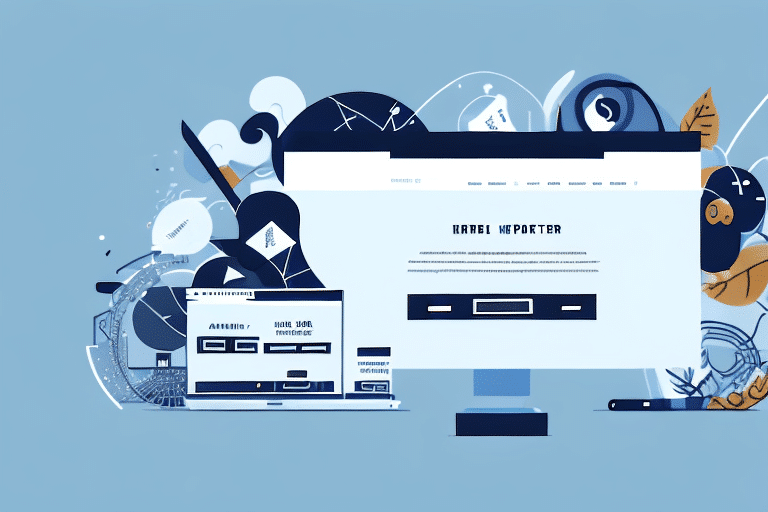Understanding the Cost of Developing an Ecommerce Website
The ecommerce industry has experienced significant growth, with global ecommerce sales reaching approximately 6.54 trillion dollars in 2022 and projected to grow further in the coming years (Statista). For business owners, establishing an online presence can unlock numerous opportunities for expansion and increased market reach. However, one of the primary considerations is the cost associated with developing an ecommerce website. This article explores the various factors influencing these costs and provides guidance on planning and optimizing your ecommerce website development budget.
Key Factors Influencing the Cost of Ecommerce Website Development
The cost of developing an ecommerce website can vary widely based on several critical factors:
Platform Selection
The choice of ecommerce platform significantly impacts development costs. Popular platforms include:
- WooCommerce – A flexible, open-source platform ideal for WordPress users.
- Shopify – A user-friendly hosted solution with various pricing tiers.
- Magento – A highly customizable platform suited for larger enterprises.
- BigCommerce – A scalable platform offering robust features for growing businesses.
Features and Functionality
Desired features, such as advanced search capabilities, product filtering, user reviews, multiple payment gateways, and integrations with third-party services, can increase development complexity and costs.
Customization Requirements
Custom designs and unique functionalities tailored to specific business needs require more development time and resources compared to using pre-designed templates.
Development Team Pricing Models
Development costs are also influenced by the pricing structure of the development team. Options include:
- Hourly Rates: Charging based on the number of hours worked.
- Fixed Pricing: A set price for the entire project scope.
- Retainer Agreements: Ongoing support and maintenance for a monthly fee.
Choosing the Right Ecommerce Platform
Selecting the appropriate ecommerce platform is crucial for the success and scalability of your online store. Consider the following when making your choice:
Overview of Popular Platforms
WooCommerce offers extensive customization and is ideal for businesses already using WordPress. Shopify provides an all-in-one solution with ease of use for those preferring a hosted platform. Magento is suitable for large businesses needing advanced features and scalability, while BigCommerce strikes a balance between customization and user-friendliness.
Customization Levels
Determine the extent to which you need to customize your website. Platforms like Magento allow for extensive customization, whereas Shopify provides more out-of-the-box features with limited customization unless you opt for advanced plans or use third-party apps.
Support and Resources
Evaluate the support and resources available for each platform. Platforms like Shopify and WooCommerce have extensive documentation, active communities, and customer support, which can be invaluable during development and maintenance.
The Importance of UX Design in Ecommerce Development
User Experience (UX) design plays a pivotal role in the success of an ecommerce website. A well-designed UX can lead to higher engagement, increased sales, and better customer retention.
Enhancing User Engagement and Sales
A user-friendly interface with intuitive navigation helps customers find products easily, leading to higher conversion rates. Features like responsive design, fast loading times, and easy checkout processes contribute to a positive user experience.
Building Customer Trust
A professionally designed website that is secure and visually appealing fosters trust among customers. Incorporating elements like SSL certificates, clear return policies, and customer reviews can enhance credibility.
Ensuring Accessibility
Designing for accessibility ensures that all users, including those with disabilities, can navigate and use your website effectively. Compliance with standards like WCAG not only broadens your customer base but also avoids potential legal issues.
Types of Ecommerce Websites and Their Associated Costs
Ecommerce websites can be categorized based on their business models, each with distinct cost implications:
B2C (Business-to-Consumer)
The most common type, focusing on selling products directly to consumers. Costs vary based on product range and additional features like personalized recommendations.
B2B (Business-to-Business)
These websites cater to other businesses, often requiring more complex functionalities such as bulk ordering, multi-tier pricing, and integration with enterprise systems, leading to higher development costs.
C2C (Consumer-to-Consumer)
Platforms like eBay or Etsy facilitate transactions between consumers. Development costs include features for user profiles, listing management, and secure payment systems.
B2G (Business-to-Government)
These specialized platforms connect businesses with governmental agencies, often requiring compliance with specific regulatory standards and security protocols, impacting development costs.
Planning and Budgeting for Your Ecommerce Website Development
Effective budget planning ensures that your ecommerce website development remains on track without compromising on essential features and quality.
Identifying Your Requirements
List all necessary features, functionalities, and integrations required for your ecommerce site. Prioritize must-have elements to guide budget allocation effectively.
Allocating Budget Wisely
Distribute your budget across different aspects of development, such as design, development, marketing, and maintenance. Allocate more funds to critical areas that directly impact user experience and conversions.
Considering Ongoing Maintenance Costs
Post-launch, your website will require regular updates, security patches, and feature enhancements. Budgeting for ongoing maintenance helps sustain the website's performance and security over time.
Investing in UX Design
Prioritizing funds for high-quality UX/UI design can lead to better user engagement and higher conversion rates, providing a strong return on investment in the long run.
Customization, Outsourcing, and Development Strategies
Deciding between customization options and development approaches such as outsourcing can significantly affect your development costs and outcomes.
Benefits of Customization
Custom-built ecommerce websites offer unique functionalities tailored to specific business needs, enhancing user experience and differentiating your brand. However, customization increases development time and costs.
Outsourcing Development
Outsourcing to experienced developers or agencies can reduce costs and access specialized skills. However, it may pose challenges in communication, project management, and quality control.
In-House Development
Having an in-house team allows for better control over the development process and closer alignment with business goals. It may involve higher initial costs but can lead to better integration and ongoing support.
Avoiding Common Mistakes and Cost-Saving Tips
Proper planning and strategic decisions can help avoid common pitfalls and reduce the overall cost of ecommerce website development.
Common Budgeting Mistakes
- Underestimating Ongoing Costs: Failing to account for maintenance, updates, and scalability can lead to budget overruns.
- Overcomplicating Features: Including unnecessary features increases complexity and costs without adding value.
- Not Allocating for Marketing: Ignoring marketing and SEO efforts can impede the website's success.
Cost-Saving Strategies
- Leverage Pre-designed Templates: Using templates can reduce design and development time.
- Prioritize Essential Features: Focus on functionalities that directly contribute to sales and user experience.
- Use Open-source Solutions: Open-source platforms can lower licensing costs.
- Opt for Phased Development: Implement features in stages to spread costs over time.
Essential Components: Mobile Responsiveness, Payment Integration, and SEO
Incorporating essential components during development ensures your ecommerce website is competitive and effective.
Mobile Responsiveness
With over half of global ecommerce traffic coming from mobile devices (Statista), ensuring your website is mobile-responsive is crucial. Responsive design improves user experience, boosts SEO rankings, and increases conversion rates.
Payment Gateway Integration
Integrating reliable and secure payment gateways, such as PayPal, Stripe, and Square, enhances customer trust and provides multiple payment options, catering to a broader audience.
Search Engine Optimization (SEO)
Investing in SEO during development helps improve your website's visibility on search engines, driving organic traffic and reducing reliance on paid advertising. Proper SEO practices include optimizing site structure, using relevant keywords, and ensuring fast load times.
Choosing the Right Development Team for Your Ecommerce Project
Selecting a competent and reliable development team is paramount to the success of your ecommerce website. Consider the following when making your choice:
Assessing Experience and Expertise
Review the team's portfolio to ensure they have experience with ecommerce projects similar to yours. Expertise in your chosen platform is also essential.
Understanding Pricing Models
Choose a pricing model that aligns with your budget and project scope, whether it's hourly rates, fixed pricing, or retainer agreements.
Evaluating Service Offerings and Communication
Ensure the development team offers comprehensive services, including design, development, testing, and support. Effective communication is critical for project success, especially if outsourcing.
Reviewing Customer Feedback
Look for reviews and testimonials to gauge the team's reliability, quality of work, and client satisfaction levels.
In conclusion, developing an ecommerce website requires careful consideration of various factors affecting cost, from platform selection and customization to UX design and ongoing maintenance. By planning meticulously, choosing the right platform and development team, and employing cost-saving strategies, businesses can create effective ecommerce websites that drive growth and achieve online success.






















